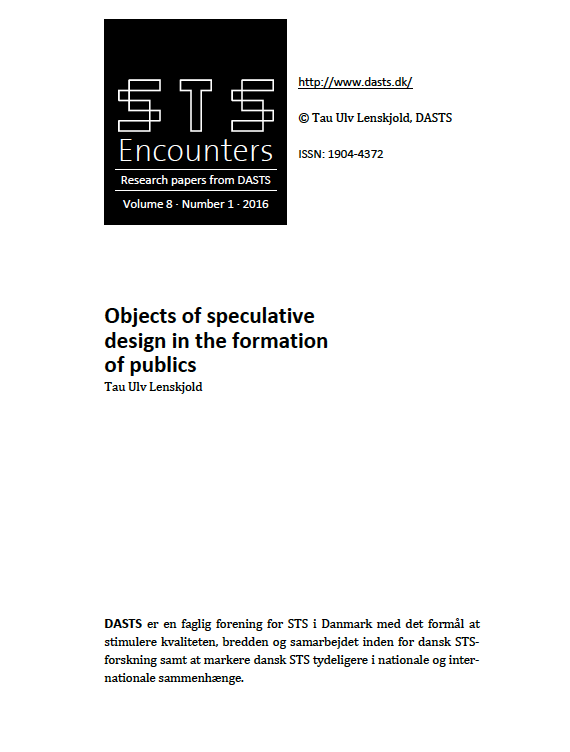Objects of speculative design in the formation of publics
DOI:
https://doi.org/10.7146/stse.v8i1.135232Abstract
Design researchers from areas such as participatory design, interaction design, and service design have in recent years increasingly turned to the field of Science and Technology Studies as a source of analytical insights and methodological rigor. A great deal of inspiration has in particular been drawn from the work of Bruno Latour and his call for a shift from Realpolitik to Dingpolitik and a move from matters of fact to matters of concern, as the basis for new political ecologies (Latour 2004a, 2005). In this paper I will relate a specific encounter between STS and design research, by looking at the design research project Material Beliefs, and more specifically the use of what has recently been termed ‘speculative design’ (Kerridge, et al. 2010). While inspired by an STS approach to public engagement, the proponents of speculative design are interested in how, and to what extent, speculative design proposals can function as ‘co-constructors’ of new publics. Viewed from a design perspective, this project aims to bring conceptual and critical design proposals out of the galleries and design studios to engage in the formation of heterogeneous publics, and as such reads as a text book example of Latour’s proposed move from a focus on objects to a focus on ‘parliament of things’. The central argument of the paper is that an encounter between speculative design and the social sciences calls into question the political schema under which design objects are elevated to the status of things in the Latourian assembly of humans and non-humans. I argue that this discounts the possibility for objects to affect the formation of publics by other means. This claim hinges on the ontological assumption that objects are in ‘excess of their relations’ (Harman 2009) and that this ‘surplus’, in turn, enables objects to affect the formation of publics in ways that cannot be grasped by an actor-network approach. On this premise, the paper examines one of the design prototypes developed in the Material Beliefs project, and concludes by proposing three additional qualities in this object that affects the formation of publics, without partaking in the democratic construction of a parliament of things.

Downloads
Published
How to Cite
Issue
Section
License

This work is licensed under a Creative Commons Attribution-NonCommercial-ShareAlike 4.0 International License.
Starting with volume 15, articles published in STS Encounters are licensed under Attribution-NonCommercial-ShareAlike 4.0 International (CC BY-NC-SA 4.0). The editorial board may accept other Creative Commons licenses for individual articles, if required by funding bodies e.g. the European Research Council. Previous articles are not licensed under Creative Commons. In these volumes, all rights are reserved to the authors of the articles respectively.




